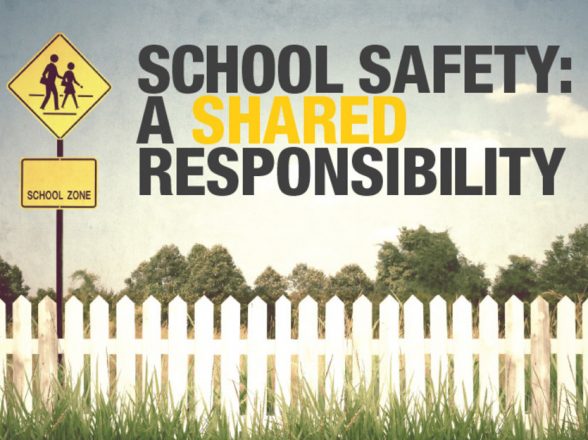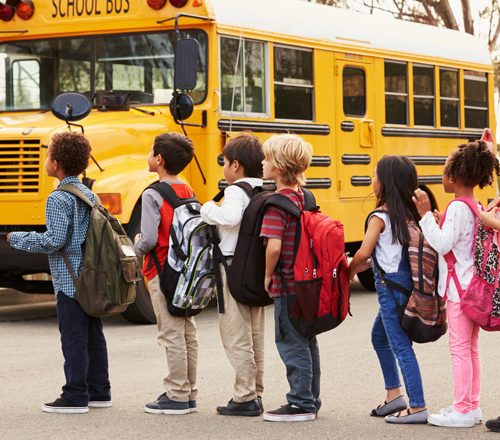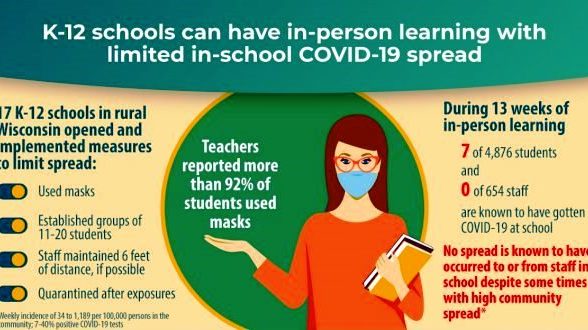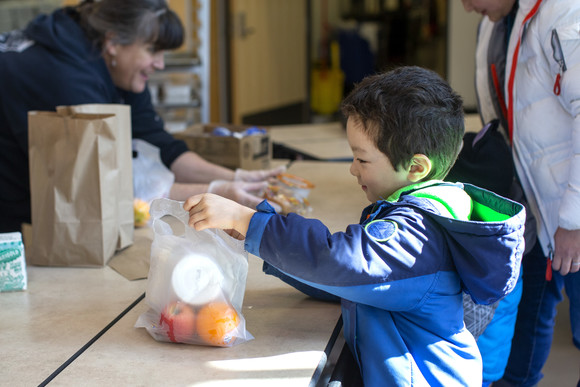Reopen & Stay Open: The Vital Role of Surface Disinfection in Schools
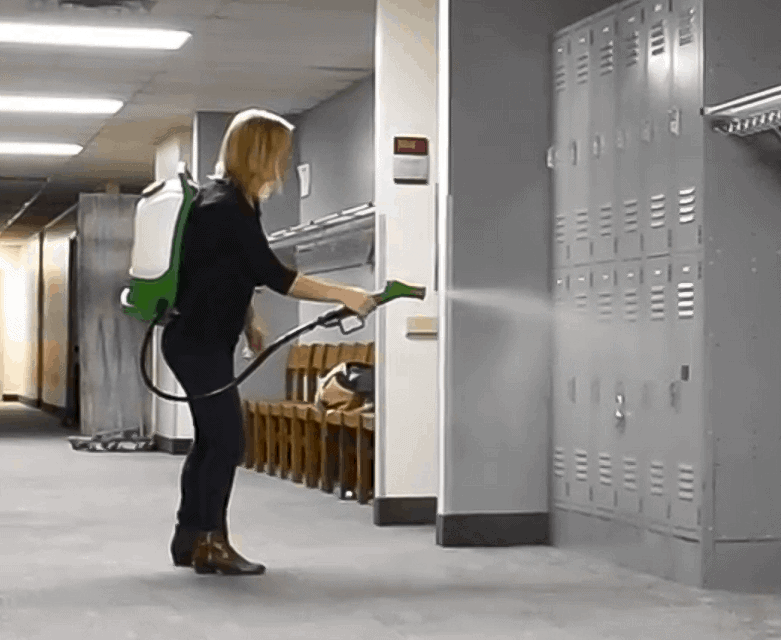
Reopen & Stay Open: The Vital Role of Surface Disinfection in Schools
KEY TAKEAWAYS
- Surface disinfection remains a critical layer of infection mitigation for schools, not only to prevent the cross-contamination of COVID-19 on surfaces, but to kill viruses that cause colds and the flu.
- Although surface (fomite) transmission of SARS-CoV2 is thought to be low and secondary to transmission by respiratory droplets, risk may be higher in some school settings.
- Higher fomite transmission risk may occur when masks are inconsistently or incorrectly worn, where hand hygiene may not be practiced properly, and with certain groups of students such as the very young or teenagers.
- With increased cleaning and surface disinfection, it’s important to choose effective EPA-registered products with low-toxicity and short kill times.
Should we wear one mask or layer two? Should we maintain a social distance of 3 feet or 6 feet? Is quarantining needed for 10 days or 14 days? Let’s face it, this pandemic is unprecedented, and over the last year we have been learning about what hygiene practices we need to take in our schools – and in our communities – to prevent the continued spread of the SARS-CoV-2 virus, which causes COVID-19. While recommendations have evolved throughout the course of the pandemic, the overall guidance has been consistent – multiple mitigation strategies should be taken to help schools open and remain open safely during the pandemic. The focus of this article is on the importance of surface disinfection in schools.
Unique factors increase contamination of surfaces in schools
As the science continues to emerge, the Centers for Disease Control and Prevention (CDC) continues to refine their guidance to reflect what we know or suspect to be true about SARS-CoV-2 transmission and infection prevention. We now know that the primary route of virus transmission is through respiratory droplets. According to the CDC, it is possible for people to be infected through contact with contaminated surfaces or objects (termed “fomites”), but the risk is generally considered to be lower. The CDC believes that the risk of fomite transmission can be reduced by wearing masks consistently, and correctly practicing frequent hand hygiene, cleaning, and taking other mitigation measures.1
In a perfect world, the practices of wearing masks, social distancing, increasing hand hygiene, quarantining/staying home if sick, and other common mitigation practices would offer the degree of infection prevention we need to safely open and keep our schools open. However, our schools and their child inhabitants are unique compared to other facilities, and several factors should be considered when contemplating which infection prevention strategies to adopt and to what degree:
- Compared with adults, children are more commonly asymptomatic, with as many as 40% of children testing positive for the SARS-CoV-2 virus presenting with no symptoms.2, 3 Additionally, infected individuals may be contagious for 48 hours before symptoms present and many more may simply not have had access to testing. This means that individuals could readily and unknowingly carry the virus into schools where they potentially could infect others.
- Mask mandates are not in place in all K-12 schools, and if they are, adherence to mask policies and social distancing may be lower in some groups of students (e.g. early education and teenagers).
- Measures to reduce airborne exposure including increasing ventilation and/or air filtration may not be feasible in many school settings, due to building infrastructure, time, or cost constraints.
- Proper hand washing protocols must be followed for effective germ removal. While hand hygiene may likely be higher now, during the pandemic, observational research among older school children previously revealed an overall compliance rate of only 50-60%,4 suggesting half the time, germs may remain on hands where they could potentially be transmitted to surfaces and infect others.
With these facts and figures in mind, are we confident in the ability of our staff, parents, and our children to follow the CDC’s recommended practices to the letter, 100% of the time? Or, should we adopt the very best evidence-based hygiene practices, including regular surface disinfection to decrease the risk of fomite transmission, for total confidence for the safety of our students and staff?
Fomites are important sources of germs in schools
If germs remain on hands or are created via respiratory droplets or aerosols when masks are not worn or improperly worn, they have the potential to be transferred to surfaces. Indeed, high-touch surfaces are major reservoirs of germs – called “fomites.” According to ABC News, commonly touched objects in schools such as cafeteria trays and gym equipment contain thousands of germs,5 such as those that cause colds, flu, and gastrointestinal diseases. We now know that the SARS-CoV-2 virus can remain on certain types of surfaces for up to 28 days.6,7 And, similar to other viruses, like those that cause cold and flu, fomite-associated cases of COVID-19 have been identified, although it is not the primary route of SARS-CoV-2 transmission.8,9 Schools, with their shared objects, close facilities and young inhabitants may represent places where risk of fomite transfer is higher.
Disinfectants can reduce the risk of germ transmission
While recent research demonstrated that fomite transmission may be relevant for SARS-CoV-2 spread (and other infectious diseases), particularly in daycare settings, both mask wearing and frequent cleaning and disinfection had the potential to reduce this risk.10 The CDC guides to frequently clean high-touch surfaces.1 However, cleaning with soap and water alone may not be enough, especially on surfaces where infectious germs may reside. According to the CDC, there have been no reported studies on the efficacy of surface cleaning with soap or detergent (not a registered disinfectant) for reducing concentrations of SARS-CoV-2 on non-porous surfaces.1 Where there may be illness-causing germs such as those that cause the common cold, flu, or even COVID-19, it is important to use an appropriate EPA-registered disinfectant. Disinfectants on the EPA’s List N11 are expected to kill the SARS-CoV-2 virus, and regular use of these products are important to break the fomite-hand transmission cycle. But that’s not all to consider. We also want to reduce exposure to harsh chemicals and fumes.
Reduce harsh chemicals in schools while still providing germ kill
Whether your school is fully open or preparing to open, with increased levels of cleaning and disinfecting in schools, there have been and continue to be concerns by pediatricians, educators, and parents about possible chemical exposures, particularly to young children. While disinfectants, such as those on the EPA List N, are believed to be effective against SARS-CoV-2 and other germs, this does not mean they are all non-toxic.
Luckily, there are EPA-registered disinfectants that are less toxic and highly effective against disease-causing germs. These disinfectants contain ingredients like citric acid, hydrogen peroxide, and ethanol, and can be identified by looking at the “Active Ingredients” on the product label.
Disinfectants that have higher toxicity ratings frequently have “Caution” statements like “causes eye irritation” or instruct to “wash hands thoroughly after use.” Other signs may include the need to rinse surfaces after product use. PURELL® surface sprays and wipes are registered by the EPA, fast-acting on germs like SARS-CoV-2 and those that cause the cold and flu, contain no harsh chemicals or fumes, and have the lowest possible EPA toxicity rating of “IV.”
Where should frequent surface disinfection be practiced in the school setting?
Surface disinfection is an “and” not an “or” – multiple mitigation strategies are needed to effectively prevent the cross-contamination of SARS-CoV-2 and other organisms in schools on an ongoing basis. With the uniqueness of the school setting and behaviors of its inhabitants, keeping a focus on disinfection remains an important piece of the school’s overall infection control plan. Key surfaces in the school that require more frequent disinfection due to higher potential for fomite transmission include:
- Cafeteria tables and any surfaces where food consumption occurs and, as such, masks are not routinely worn.
- Shared objects and equipment, particularly where mask adherence may be lower or heavy breathing may occur, such as during recess, gym/physical activity, or restroom breaks.
- Hard- and soft-surfaces in classrooms used for early education and for groups of students that engage in higher-risk practices (e.g. middle- and high-schoolers who do not cohort and/or may engage in outside social activities).
- Any surfaces that may have come in contact with an individual with a confirmed or suspected case of COVID-19.
For additional materials to help your school reopen and stay open, including interactive experiments to help students understand how germs are transmitted throughout the classroom by hands, Call or email us.
1. Accessed April 14, 2021. The Centers for Disease Control and Prevention. “Science Brief: SARS-CoV-2 and Surface (Fomite) Transmission for Indoor Community Environments.” https://www.cdc.gov/coronavirus/2019-ncov/more/science-and-research/surface-transmission.html.
2. CDC COVID-19 Response Team. Coronavirus Disease 2019 in Children — United States, February 12–April 2, 2020. MMWR Morb Mortal Wkly Rep. 2020;69(14):422-426. Published 2020 April 10.
3. Hurst, J. et al. Severe Acute Respiratory Syndrome Coronavirus 2 Infections Among Children in the Biospecimens from Respiratory Virus-Exposed Kids (BRAVE Kids) Study, Clinical Infectious Diseases, 2020;, ciaa1693, https://doi.org/10.1093/cid/ciaa1693.
4. Pete JM. Handwashing practices among various school age students. Health Education December 1986/ January 1987; 37-39.
5. Accessed April 14, 2021. ABC News. “Schools Can Be a Hotbed of Bacteria.” https://abcnews.go.com/GMA/OnCall/story?id=2455073&page=1.
6. Chin AWH, Chu JTS, Perera MRA, Hui KPY, Yen HL, Chan MCW, et al. Stability of SARS-CoV-2 in different environmental conditions. Lancet Microbe. 2020;1:e10.
7. Van Doremalen N, Bushmaker T, Morris DH, Holbrook MG, Gamble A, Williamson BN, et al. Aerosol and surface stability of SARS-CoV-2 compared with SARS-CoV-1. N Engl J Med. 2020;382:1564–7.
8. Cai J, Sun W, Huang J, Gamber M, Wu J, He G. Indirect Virus Transmission in Cluster of COVID-19 Cases, Wenzhou, China, 2020. Emerging Infect. Dis. 2020, 26, 1343–1345.
9. Galbadage T, Peterson BM, Gunasekera RS. Does COVID-19 Spread Through Droplets Alone?. Front. Public Health 2020, 8, 163.
10.Kraay ANM, Hayashi MAL, Berendes DM, Sobolik JS, Leon JS, Lopman BA. Risk for Fomite-Mediated Transmission of SARS-CoV-2 in Child Daycares, Schools, Nursing Homes, and Offices. Emerg Infect Dis. 2021 Apr;27(4):1229-1231.
11. Accessed March 24, 2021. The United States Environmental Protection Agency. “List N: Disinfectants for Coronavirus (COVID-19).” https://www.epa.gov/pesticide-registration/list-n-disinfectants-coronavirus-covid-19





